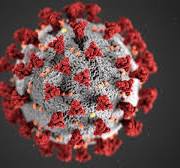Over five years after COVID-19 brought the globe to a halt, there is still intense discussion about how the virus got started. Did a disastrous lab accident in Wuhan cause it? Or did the animals that were sold in wet markets naturally cause it to flow over?
The second view is now supported by a significant new study conducted by researchers from the University of Edinburgh, which asserts that Covid-19 most likely arose naturally in the Southeast Asian bat population rather than in labs in Wuhan, China.
The “lab-leak theory,” which is supported by US officials, including President Donald Trump, has now been called into question by the latest study.
What it says is as follows.
What is explained by the Edinburgh study?
Scientists are describing the finding, which was published earlier this month in the peer-reviewed journal Cell, as the best genetic evidence to far against the lab leak scenario of Covid-19’s origin.
The study, which was headed by academics from the University of Edinburgh and involved specialists from 20 institutions in the US, Europe, and Asia, examined 167 bat coronavirus genomes. Their goal was to track the virus that started the worldwide pandemic’s evolutionary history.
Researchers identified that the nearest known relatives of SARS-CoV-2 — the virus that led to the Covid-19 pandemic — were present in bat populations in northern Laos and China’s Yunnan province. Their analysis indicates that the virus’s most recent predecessor likely appeared between five and seven years prior to the initial detection of Covid-19 in late 2019.
Lead author Jonathan Pekar explained in an interview with the science news platform EurekAlert that the evidence strongly shows the ancestor of SARS-CoV-2 was spreading among bats located thousands of kilometers from Wuhan.This places the evolutionary origins of the virus much outside Wuhan’s research facilities’ geographic reach.
The lab leak scenario, which is strongly promoted by US President Donald Trump and other officials, asserts that the virus escaped from a Wuhan laboratory. This conclusion directly contradicts that idea.
The terms “LAB LEAK,” “TRUTH,” and “ORIGIN” are now prominently displayed in large capital letters on the White House website, which previously concentrated mostly on testing and vaccination initiatives.
In this account, scientists at the Wuhan Institute of Virology (WIV) reportedly showed symptoms similar to Covid-19 in late 2019, prior to the virus being linked to the now-notorious wet market. Additionally, Covid-19 displays biological features that are rarely found in viruses that occur naturally.
It further maintains that the scientific proof would have become evident by now if the virus had developed spontaneously.
However, the Edinburgh study now offers a quite different story.
Was COVID-19 caused by the illegal wildlife trade?
According to recent studies, human-driven activities—specifically, the illicit wildlife trade—are probably responsible for the Covid-19 virus’s spread.
Scientists believe that the virus’s closest common ancestor likely emerged around the year 2017. Bat species from northern Laos, which is more than 2,700 km from Wuhan and well outside of bats’ normal migratory range, have been revealed to be its closest genetic relatives.
Therefore, experts think that the virus became closer to human populations because infected animals were transported through illicit trade networks.
Evolutionary biologist Michael Worobey, a senior author at the University of Arizona, emphasised that this pattern is not new.
Additionally, the Sars-CoV-1 virus spread far beyond its bat origins thanks to intermediate hosts like raccoon dogs and palm civets. Sars-CoV-2 probably followed this pattern as well,” he told the South China Morning Post.
This implies that human exploitation of animals through trade and trafficking, rather than natural migration, was a major factor in the virus’s spread to heavily inhabited areas.
The Covid-19 viral migration is similar to other zoonotic outbreaks; for example, the 1910 Manchurian plague was caused by marmots carrying Yersinia pestis that were shipped from Russia to Harbin, China, via the Trans-Siberian Railway. More than 60,000 people were killed in that outbreak.
But unlike the well-established origins of Sars and the Manchurian plague, the precise route by which Covid-19 spreads from bats to humans is still unknown.
